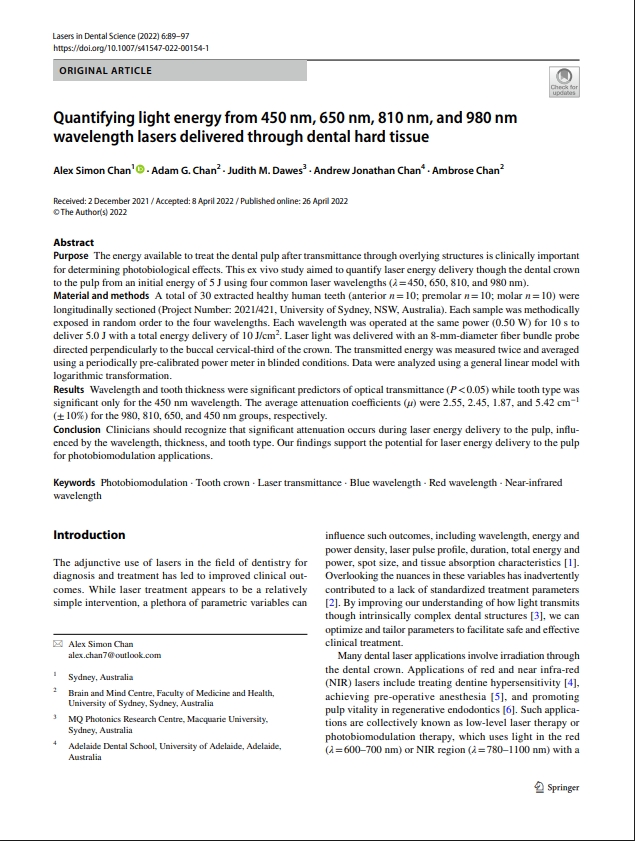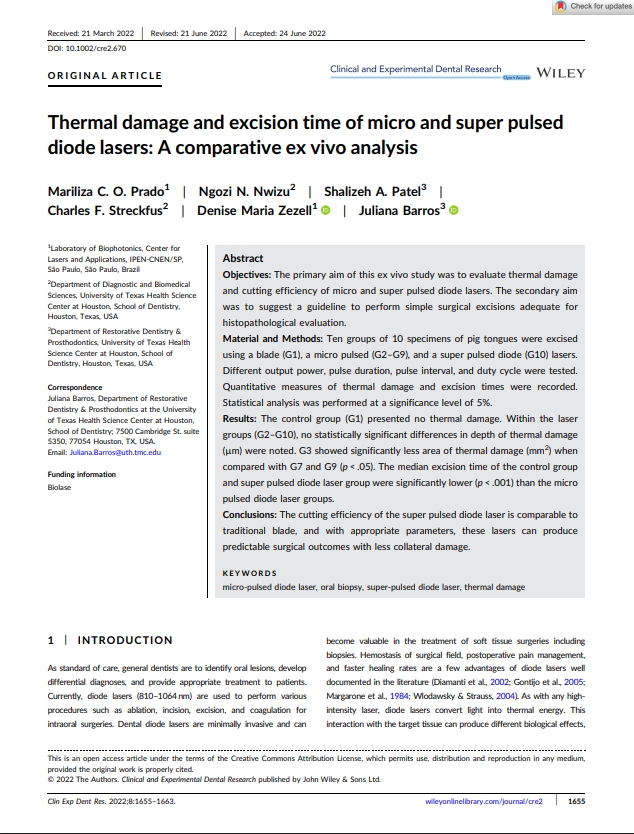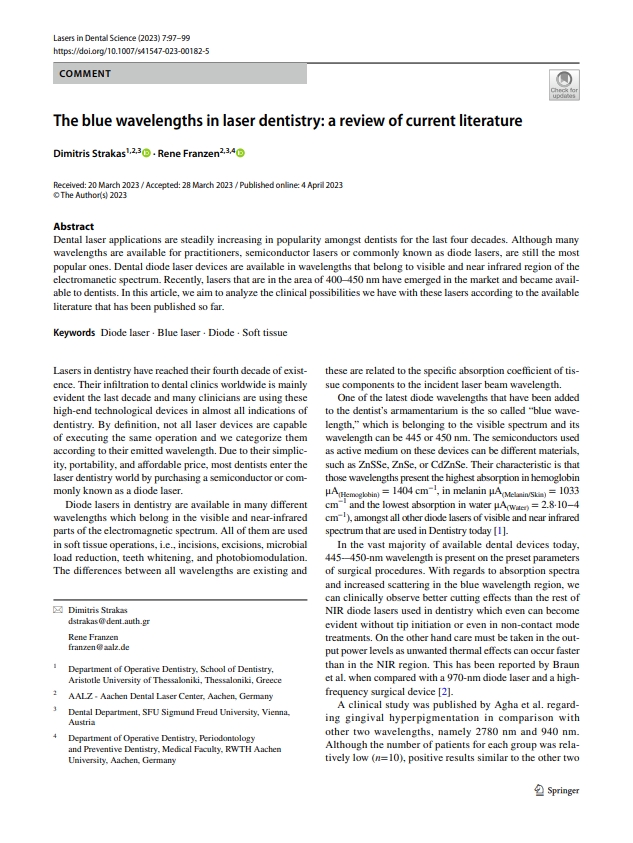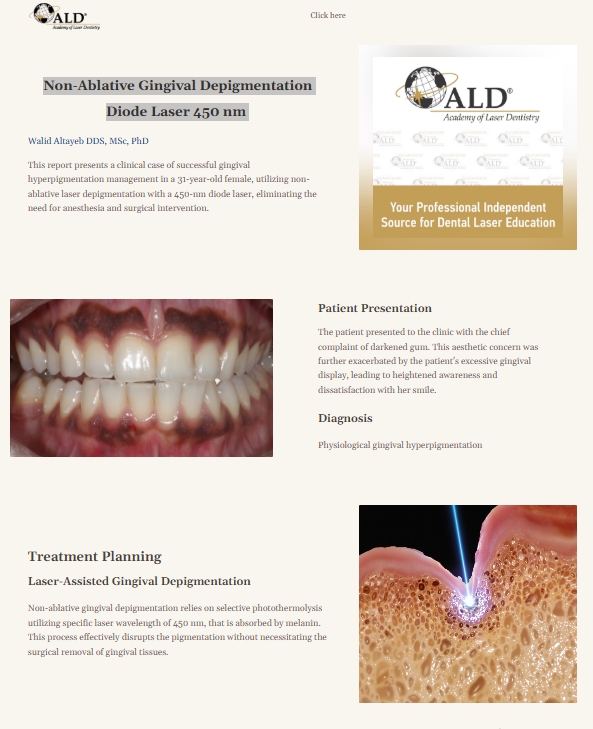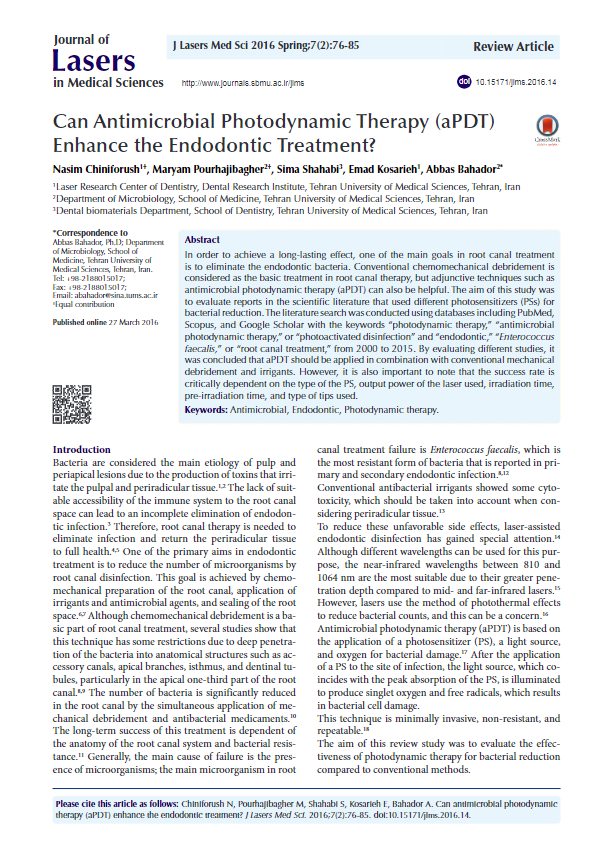Measurement of Light Energy Transmission Through Dental Hard Tissue at 450 nm, 650 nm, 810 nm, and 980 nm
This study, titled “Quantifying light energy from 450 nm, 650 nm, 810 nm, and 980 nm wavelength lasers delivered through dental hard tissue” (Lasers in Dental Science, 2022), investigated ex vivo how much light energy from four laser wavelengths penetrates dental crowns to reach the pulp, using 30 extracted human teeth (incisors, premolars, molars).
At 0.5 W for 10 s (5 J total), results showed light transmission strongly depended on wavelength and crown thickness (P < 0.05); tooth type only significantly affected the 450 nm wavelength.
Measured absorption coefficients (µ) were approximately: 980 nm ≈ 2.55 cm⁻¹, 810 nm ≈ 2.45 cm⁻¹, 650 nm ≈ 1.87 cm⁻¹, and 450 nm ≈ 5.42 cm⁻¹ (±10%).
The study concludes that substantial attenuation by hard tissue should be considered in clinical practice to ensure sufficient light energy reaches the pulp for effective photobiomodulation.
